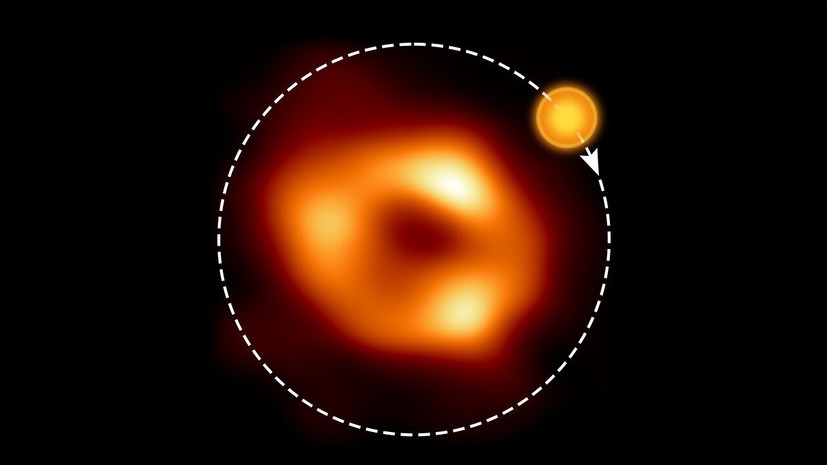An international team of astronomers has detected signs of a hot spot rotating around the supermassive black hole Sagittarius A* using the ALMA radio observatory (Atacama Large Millimeter/submillimeter Array).
The black hole Sagittarius A* is located in the middle of the Milky Way, it is believed that such objects are present in the centers of most spiral and elliptical galaxies.
The results of the study are published in the journal Astronomy & Astrophysics.
“We think we are seeing a bubble of hot gas moving rapidly around Sagittarius A* in an orbit comparable in size to that of the planet Mercury, but making a complete revolution in about 70 minutes.
This requires a crazy speed, which is about 30% of the speed of light! ”, - explained the head of the study, Macek Velgus from the Max Planck Institute for Radio Astronomy in Bonn (Germany).
ALMA telescopes
Gettyimages.ru
© Ronald Patrick
The radio telescope complex of the ALMA observatory is located in the Chilean Atacama Desert, on the Chajnantor Plateau - local climatic conditions allow observations in the submillimeter range.
The project was implemented by the European Southern Observatory (ESO), the US National Science Foundation (NSF) and the National Institutes of Natural Sciences of Japan (NINS).
In 2017, the ALMA observatory was connected to the EHT (Event Horizon Telescope - Event Horizon Telescope) project, a network of eight observatories working together on the principle of a radio interferometer (a radio interferometer is an instrument for radio astronomical observations with high angular resolution, which includes several antennas located on a large distance from each other.
- RT
).
The aim of the project was to observe supermassive black holes located at the center of galaxies - including the Milky Way.
The first ever image of the shadow of a Sagittarius A* black hole was taken by astronomers in May 2022.
Since the hole itself cannot be seen due to the fact that light and matter are absorbed by its gravitational field, scientists observe a fuzzy ring of light at the edge of a black hole - the so-called shadow.
The authors of the work found that it is the ALMA radio telescope that is able to provide a significant amount of information about a black hole.
“The new and interesting fact here is that such flashes have so far been clearly present only when Sagittarius A * is observed in x-rays and infrared rays.
Here, for the first time, we see very convincing evidence that hot spots moving in orbit are also visible in radio observations, ”Velgus added.
galaxy milky way
© Mostafa Alkharouf / Anadolu Agency
The researchers believe that the hot spots, visible in the infrared, as they cool, become visible at longer wavelengths - in the submillimeter range of the ALMA observatory.
Probably, in all cases we are talking about one physical phenomenon.
The new data also supports the hypothesis that the observed flares at the edge of a black hole are the result of magnetic interactions in hot gas, the authors of the work note.
The information obtained will help scientists interpret the physical events taking place near the edges of a supermassive black hole.
As one of the authors of the study, Ivan Marti-Vidal from the University of Valencia, noted, in the future, astronomers will track hot spots in different ranges.
This could be a real breakthrough in understanding the physics of flares at the center of the Galaxy, the scientist added.

